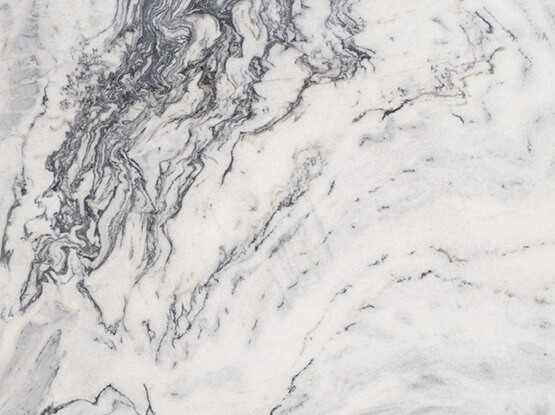Description

Disclaimer: Copyright infringement not intended.
Context
- Marble mined in Gujarat's Ambaji has been awarded the Geographical Indication (GI) tag by the Central Government.
Details
- ‘Ambaji White Marble’ (AWM), famous for its use in constructing religious buildings since long, has got GI (Geographical Indications) tag from the Office of the Controller General of Patents, Designs and Trade Marks (CGPDTM).
- The marble has been used in the construction of the famous Ambaji Temple.
- This marble, mined since the early medieval period from Ambaji in Banaskantha district, Gujarat, is one of the most popular marbles in the country.
- AWM absorbs less heat and remains cool even under direct sun exposure.
- AWM has been used in India’s well-known temples like Kashi Vishwanath Corridor in Uttar Pradesh and in the newly-developed Parliament of India too.
Special features
- Ambaji is famous for its white marble as it has the maximum whiteness – in the range of 95.8% -96.3%.
- The marble has uniform and closely packed fine grains.
- AWM is translucent, can be polished to high gloss, and is relatively hard when compared to other varieties of marble found in India. That’s why it has been used in Indian temple architecture and stone sculpture carvings since the seventh century.
- The relative hardness of AWM has enabled traditional artisans to carve minute, exquisite details. This can be seen in several Jain temples from the medieval period. Intricacy can also be seen in artefacts and handicrafts from the region carved in AWM.
- GI tagging not only secures the legal rights of the artisans and others but also assists in uplifting the livelihood of the region.
What is a geographical indication?
- A geographical indication (GI) is a sign used on products that have a specific geographical origin and possess qualities or a reputation that are due to that origin. In order to function as a GI, a sign must identify a product as originating in a given place.
- In addition, the qualities, characteristics or reputation of the product should be essentially due to the place of origin.
- Since the qualities depend on the geographical place of production, there is a clear link between the product and its original place of production.

What rights does a geographical indication provide?
- A geographical indication right enables those who have the right to use the indication to prevent its use by a third party whose product does not conform to the applicable standards. For example, in the jurisdictions in which the Darjeeling geographical indication is protected, producers of Darjeeling tea can exclude use of the term “Darjeeling” for tea not grown in their tea gardens or not produced according to the standards set out in the code of practice for the geographical indication.
- However, a protected geographical indication does not enable the holder to prevent someone from making a product using the same techniques as those set out in the standards for that indication.
- Protection for a geographical indication is usually obtained by acquiring a right over the sign that constitutes the indication.
For what type of products can geographical indications be used?
- Geographical indications are typically used for agricultural products, foodstuffs, wine and spirit drinks, handicrafts, and industrial products.
How are geographical indications protected?
- There are four main ways to protect a geographical indication:
- so-called sui generissystems (i.e. special regimes of protection);
- using collective or certification marks;
- methods focusing on business practices, including administrative product approval schemes; and
- through unfair competition laws.
- These approaches involve differences with respect to important questions, such as the conditions for protection or the scope of protection.
- On the other hand, two of the modes of protection — namely sui generissystems and collective or certification mark systems — share some common features, such as the fact that they set up rights for collective use by those who comply with defined standards.
- Broadly speaking geographical indications are protected in different countries and regional systems through a wide variety of approaches and often using a combination of two or more of the approaches outlined above.
- These approaches have been developed in accordance with different legal traditions and within a framework of individual historical and economic conditions.
What is the difference between a geographical indication (GI), an appellation of origin (AO), a protected designation of origin (PDO) and a protected geographical indication (PGI)?
- The term “geographical indications”, in its broad sense, includes a variety of concepts used in international treaties and national/regional jurisdictions, such as: appellation of origin (AO), protected designation of origin (PDO) and protected geographical indication (PGI). For instance,
- “Geographical indication” is defined in the Agreement on Trade-Related Aspects of Intellectual Property Rights (TRIPS) and in the Geneva Act of the Lisbon Agreement on Appellations of Origin and Geographical Indications.
- “Appellation of origin” is defined in the Lisbon Agreement for the Protection of Appellations of Origin and their International Registration and in the Geneva Act of the Lisbon Agreement on Appellations of Origin and Geographical Indications.
- “Protected Designation of Origin (PDO)” and “Protected Geographical Indication (PGI)” are terms used within the European Union.
ALL ABOUT GI TAG: https://www.iasgyan.in/daily-current-affairs/gi-tag
|
PRACTICE QUESTION
Q. Consider the following statements about Ambaji White Marble (AWM):
1.AWM absorbs less heat and remains cool even under direct sun exposure.
2.AWM has a whiteness range between 95.8% and 96.3%.
3.The relative hardness of AWM has enabled traditional artisans to carve intricate details, seen in medieval Jain temples.
4.AWM has been used in notable Indian structures such as the Kashi Vishwanath Corridor and the new Parliament of India.
Which of the above statements are correct?
A) 1 and 2 only
B) 2 and 3 only
C) 1, 2, and 3 only
D) 1, 2, 3, and 4
Answer: D
|
SOURCE: indiatvnews












